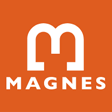The Italian Jewish Heritage
Shalom Italia celebrates heritage of Italian Jews (from Jweekly.com)
By Teresa Strasser | January 12, 1996
For one thing, it informs us that Jews like Colli were widely accepted into the mainstream Christian culture of Italy, at a time when this was not the case in other parts of Europe. The Latin wording on the University of Padua document says, “In the Lord’s eternal name,” not “In Christ’s eternal name,” as was usually the custom. Colli’s diploma was changed so as not to offend him.
The document is part of “The Italian Jewish Heritage: Selections from the Magnes Museum Collections,” which opens Saturday, Jan. 13 and kicks off a four-month celebration of Italian Jewish culture, “Shalom Italia.”
The event opens with a feast for the eyes at the museum, and concludes in April with a feast for the stomach, an Italian-inspired Passover dinner served by celebrated chef Joyce Goldstein at Square One Restaurant.
In between are lectures, films and concerts highlighting the achievements of Italian Jewish artists and scientists throughout history.
“It’s a very unknown reality. Many people are amazed hearing there are Jews in Italy,” says Shalom Italia chair Esther Prigioni, a Swiss Jew who is married to Italian Consul General Giulio Prigioni.
“In fact, it’s the oldest Jewish community that has continually existed in the western world,” she adds. “There’s been no interruption for the last 2,000 years. They gave us a very rich heritage in culture, economics, politics, you name it.”
Shalom Italia aims to display treasures of this legacy, from the work of Italian Jewish composer Mario Castelnuovo-Tedesco, which the Sausalito String Quartet will perform in March, to the writings of scientist and Holocaust survivor Primo Levi, which U.C. Berkeley Professor of Italian Gian-Paolo Biasin will discuss in February.
Film screenings include “The Righteous Enemy,” a 1987 film about Italian resistance to the Final Solution. After the film’s screening in early February, Ginetta Sagan will discuss her years in the anti-fascist resistance in Italy. Sagan was the co-founder of Amnesty International in the Bay Area.
Italian Jewry was decimated during World War II. Deportation and Mussolini’s anti-Jewish campaign cut the country’s Jewish population by 40 percent.
Today, the Jewish community numbers 34,500 Jews, concentrated mostly in Rome and Milan. Despite its small size, Prigioni says contemporary Italian Jewry continues to have a strong cultural impact.
As part of Shalom Italia, 1985 Nobel Prize winner Franco Modigliani will be discussing both economics and growing up in Italy. Author Alexander Stille will read from his acclaimed novel “Benevolence and Betrayal,” which follows five Italian families under fascism.
Tania Coen, who will be giving a lecture on Italian ketubot (marriage contracts), says she hopes Shalom Italia will educate Bay Area Jews about a community most find mysterious. Coen, who grew up in Rome, now works for the Israeli Consulate in San Francisco.
“The most confusing thing is that most Jews in the Bay Area, and America in general, believe Italian Jews are Sephardic. This is not entirely true. They have their own customs, traditions. Much of what they absorbed over the years is Sephardic, but they also added something from the Italian culture and from Ashkenazic,” Coen says.
“It’s a mix of all different traditions. This is what makes them different from all other communities.”
According to Coen, Passover seders in Italy are a product of this mix of traditions. The seder plate is filled with the usual Ashkenazic ceremonial foods, but artichokes, a popular side dish in Rome, are also served. To complete the marriage of several Jewish traditions, Italian Jews eat rice on Passover, which is a Sephardic custom.
The Magnes exhibit of Italian art makes this convergence of customs obvious and visual.
A preserved page from a 15th century Rosh Hashanah prayerbook, for example, uses Ashkenazi calligraphy but is decorated with bright rosettes and a red-headed bird — indicating to art scholars that the manuscript is Italian in origin.
The Magnes exhibit and other Shalom Italia events were organized by the Amici Dell’Italia Foundation and the Italian Consulate General in San Francisco. Funding for the program was provided by the Bernard Osher Jewish Philanthropies Foundation and Olivetti Atc.
Keep Up-To-Date

